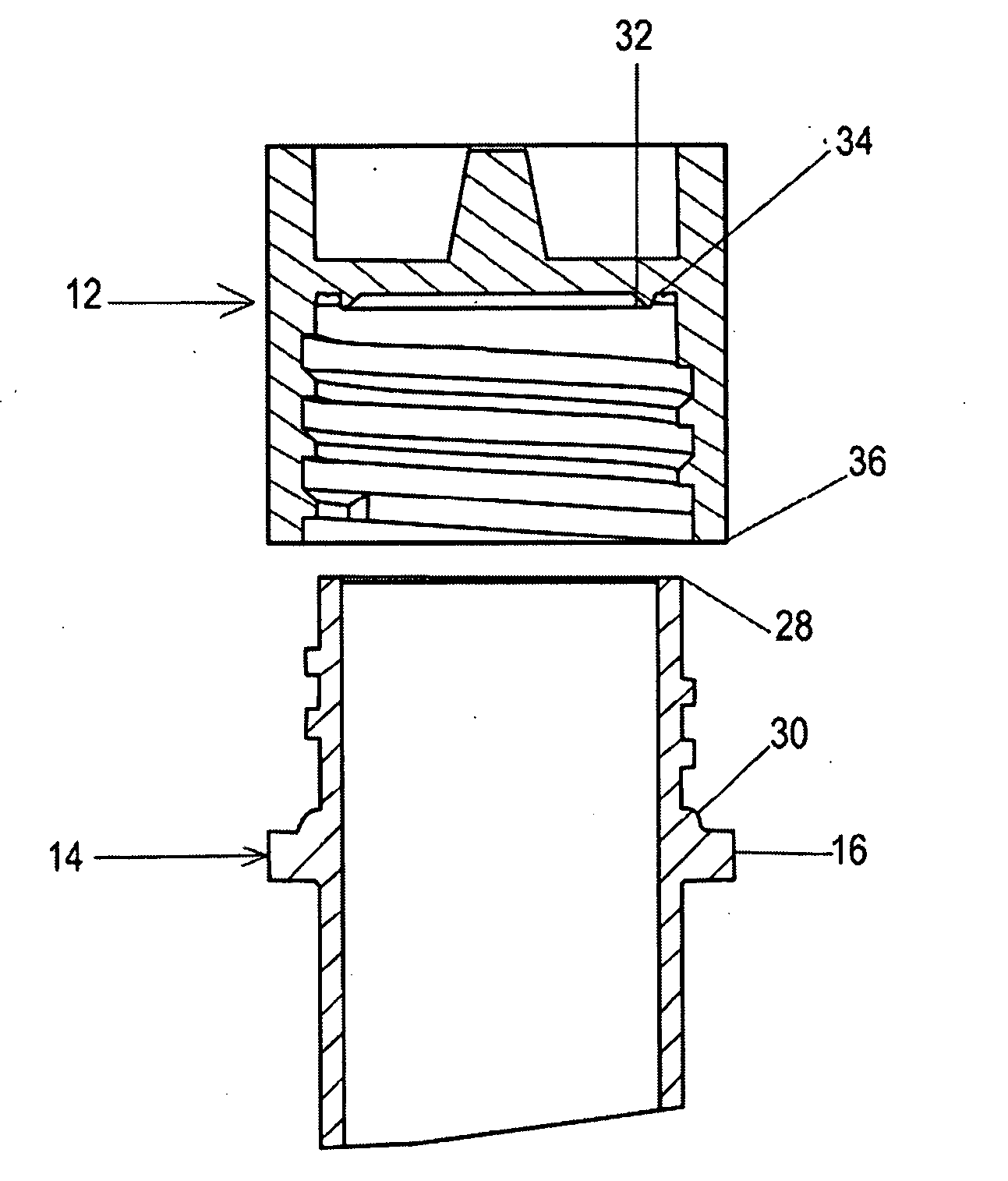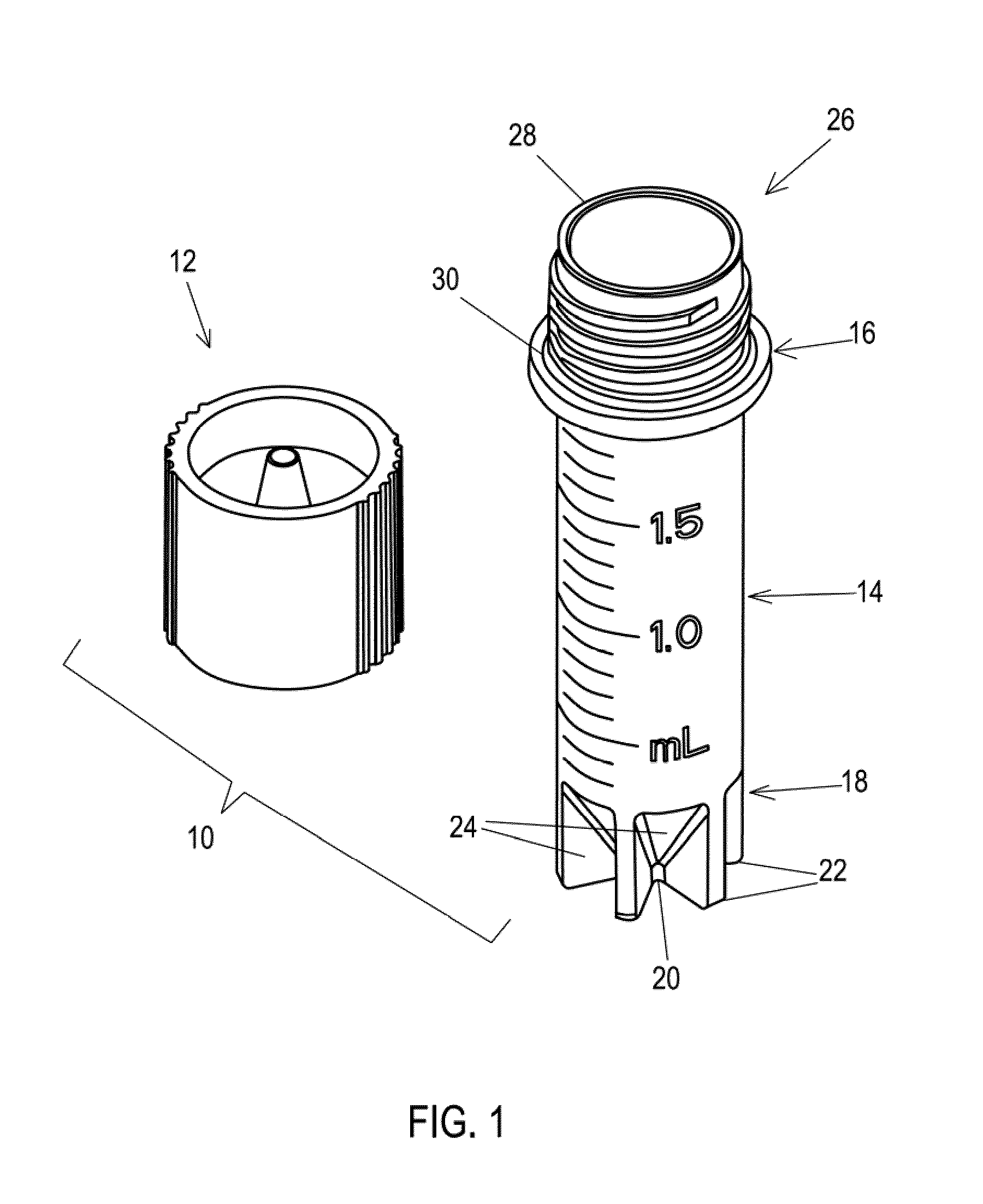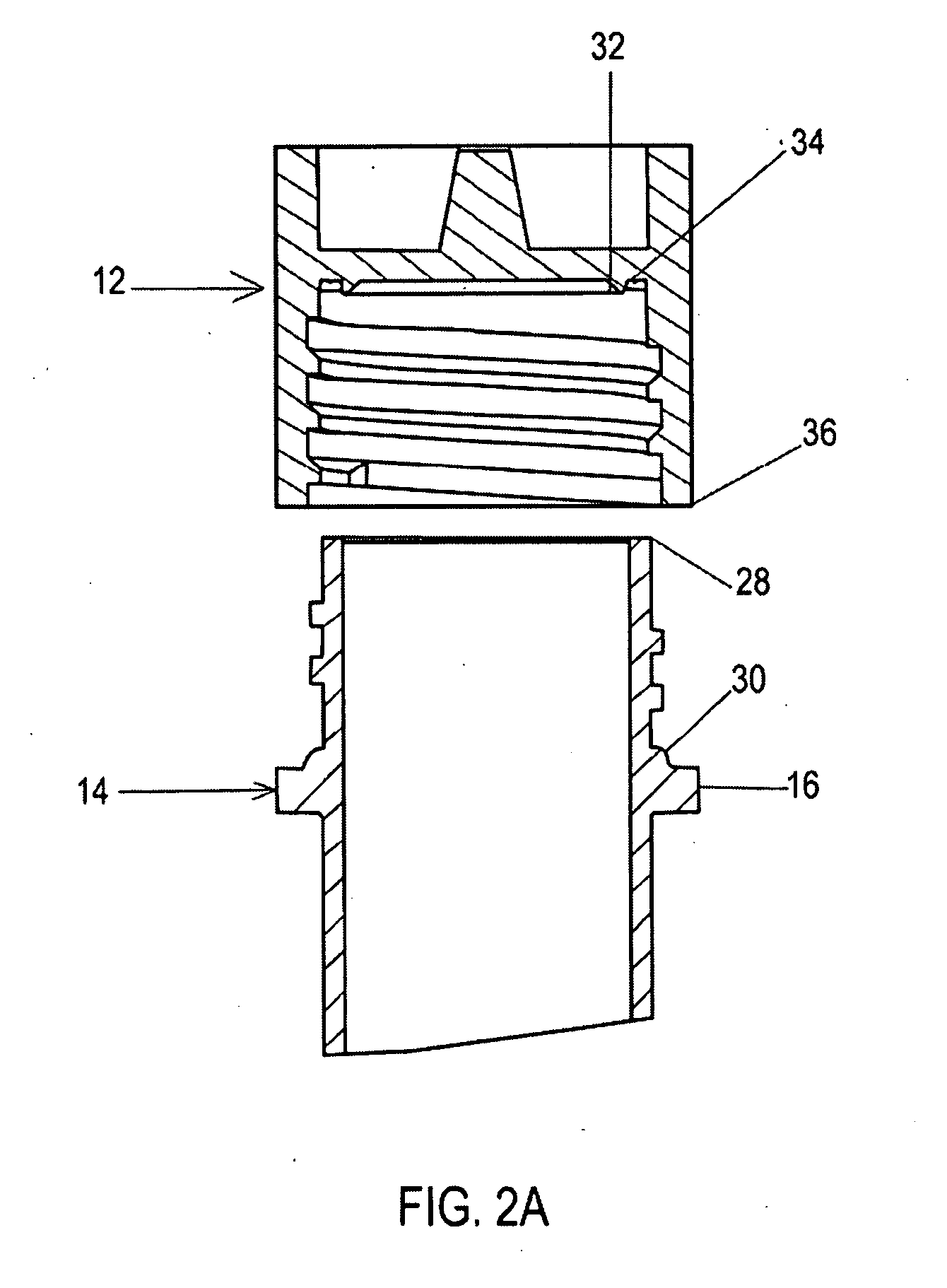Cryogenic storage container
a technology for cryogenic storage containers and storage containers, applied in the direction of containers, discharging methods, laboratory glassware, etc., can solve the problems of limited approach, waste of materials, time-consuming, etc., and achieve the effect of reducing the risk of cross-contamination, preventing spillage or contamination, and simplifying the handling and processing of biological specimens
- Summary
- Abstract
- Description
- Claims
- Application Information
AI Technical Summary
Benefits of technology
Problems solved by technology
Method used
Image
Examples
Embodiment Construction
[0011]In one embodiment of the invention, shown in FIG. 1, a cryogenic storage container (10) includes a cap (12) and a vessel body (14). In the illustrated embodiment, a flange (16) is provided on vessel body (14) and a specialized bottom end (18) is formed in vessel body (14).
[0012]As shown in FIG. 1, the illustrated bottom end (18) is tapered so as to lead to a narrower tip (20). It is contemplated that tip (20) may be rounded or pointed. However, a plurality of fins (22) are positioned at bottom end (18) so as to provide, among other things, a stand that supports container (10) when it is positioned to stand on its bottom end (18) and better heat transfer capabilities during cooling and thawing steps in the cryopreservation process.
[0013]Between fins (22) at the bottom end (18) forms multiple vapor passages (24). Vapor passages (24) provide pathways to release vapor formed during cryopreservation. As such, it reduces vapor accumulation and vapor insulation layer at the bottom of...
PUM
 Login to View More
Login to View More Abstract
Description
Claims
Application Information
 Login to View More
Login to View More - R&D
- Intellectual Property
- Life Sciences
- Materials
- Tech Scout
- Unparalleled Data Quality
- Higher Quality Content
- 60% Fewer Hallucinations
Browse by: Latest US Patents, China's latest patents, Technical Efficacy Thesaurus, Application Domain, Technology Topic, Popular Technical Reports.
© 2025 PatSnap. All rights reserved.Legal|Privacy policy|Modern Slavery Act Transparency Statement|Sitemap|About US| Contact US: help@patsnap.com



